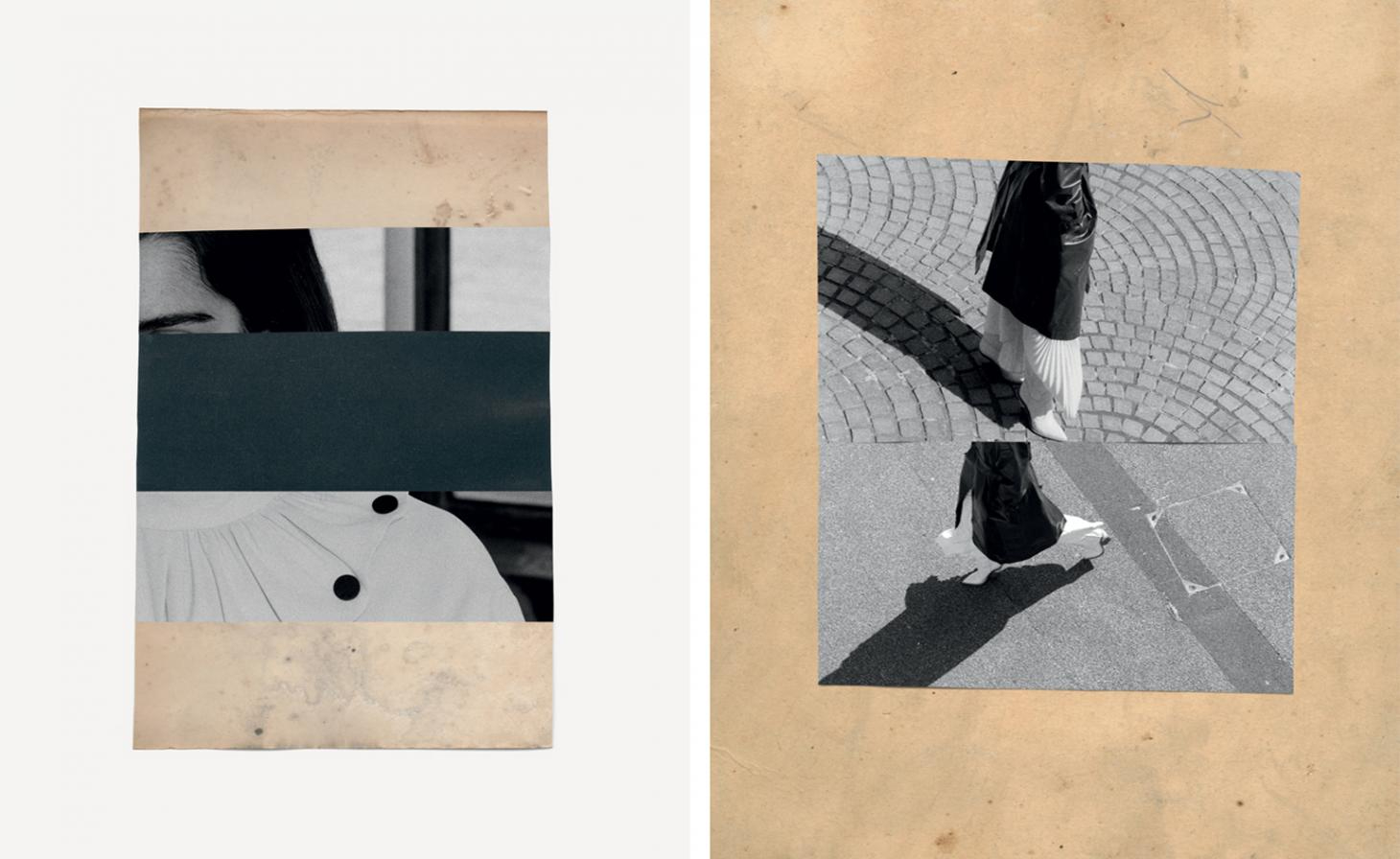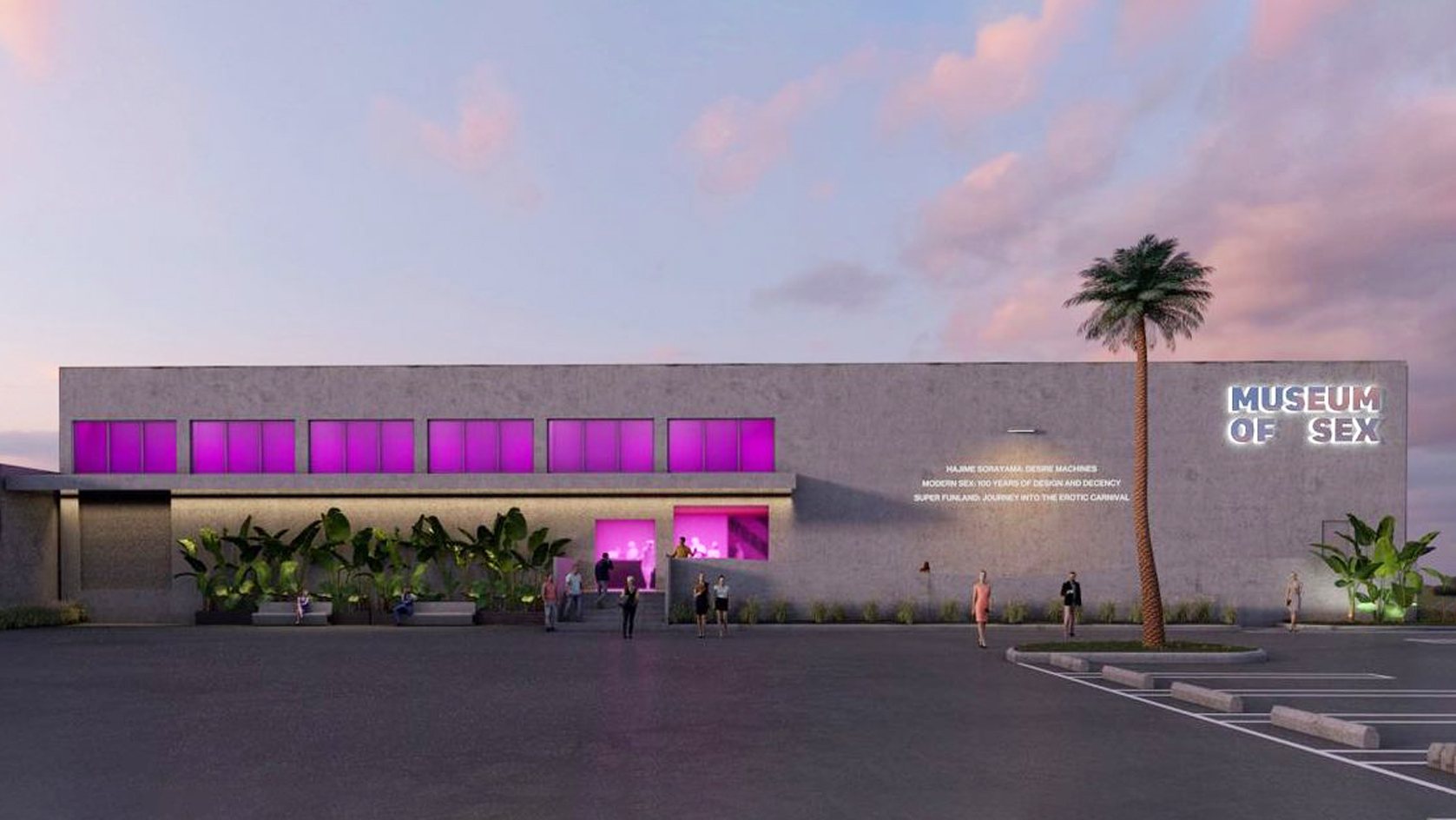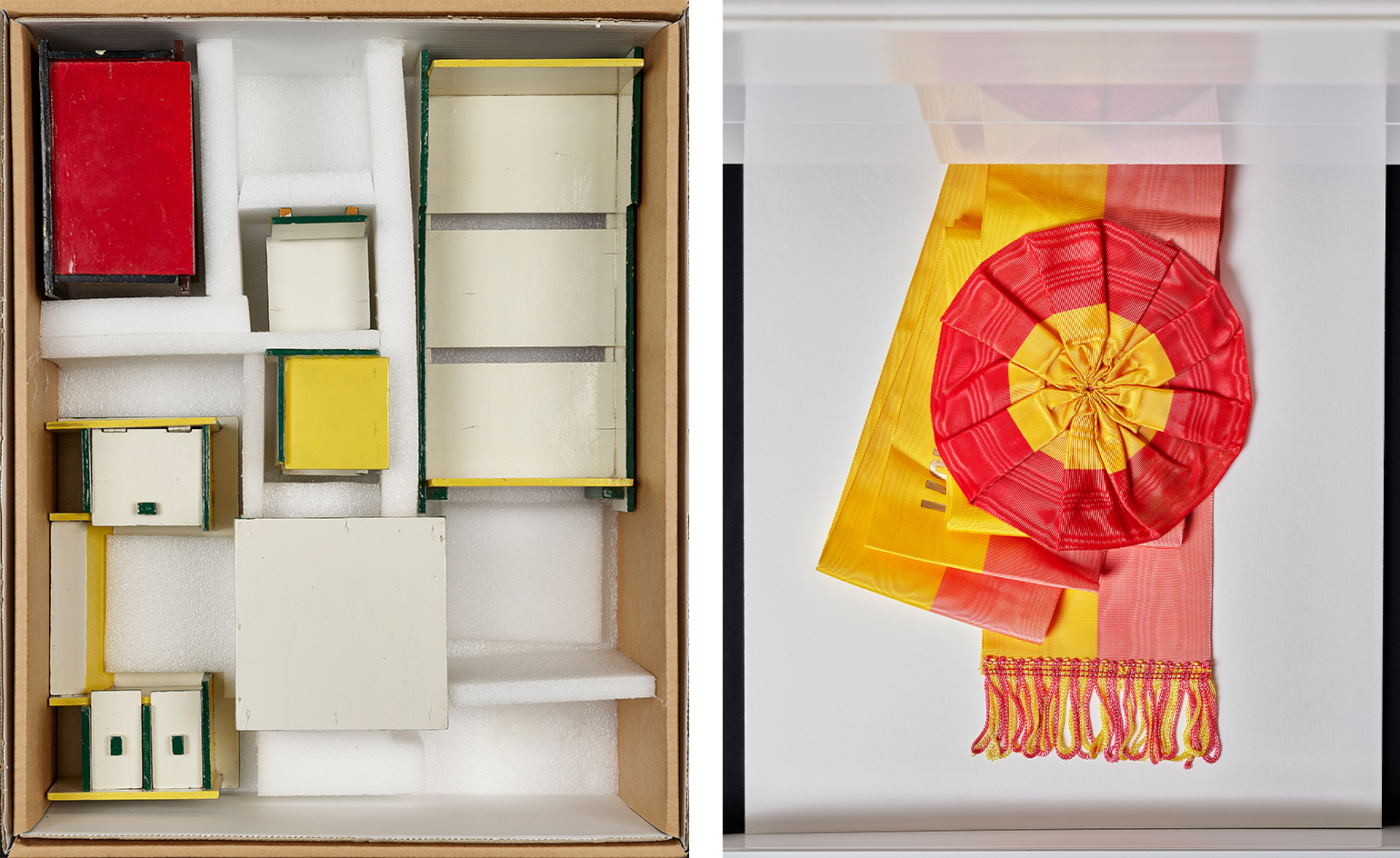Artist Katrien De Blauwer’s photomontages have us doing double takes
Her uncanny clippings offer a new way of seeing at Nederlands Fotomuseum

She’s known as the photographer without a camera – an intriguing way of introducing works that bring back long-forgotten imagery from vintage magazines. Katrien De Blauwer has worked with photomontage methods since she made her first collage books 20 years ago, after abandoning a degree in fashion at Antwerp’s Royal Academy.
Her early books were made as moodboards for fashion collections but they soon evolved into a language of their own, De Blauwer chopping away in a trance-like state. She likens her practice more closely to that of a film editor than a photographer, and cites the structures of nouvelle vague cinema and film noir as influences.

Painted Scenes 63
As prolific as she has been, the Belgian artist would keep her work under wraps for years, only presenting them to the public in the form of a first publication in 2014. Since then, she’s produced several further books and presented exhibitions, the latest and largest of which is now showing at Rotterdam’s Nederlands Fotomuseum.
‘Attack’ is a bold title for an exhibition – but this is the way De Blauwer approaches her work, using simple tools (scissors, paper, glue, pencil, and more recently paint) to cut intuitively through her stock of collected magazines, printed in the west between 1920 and 1960. Her method may be intuitive but the results are as sharp and decisive as the motion of her scissors.
RELATED STORY

Returning constantly to female bodies, the montages have a strange erotic resonance, as dark and murky as surrealists or dadaists, with floating, disembodied limbs and lips, noses and toes, and intrusions of red paint. Her process of deconstructing and reassembling becomes a comment on the depiction of women in the source images of the mid-20th century, at a time when image culture started to take off. It evolves into the present perception of female forms and how the past has instilled contradictory ideas about femininity and femaleness.
These are tensions felt by the artist herself and revealed by the openness of her modus operandi: on the one hand, between De Blauwer’s clear appreciation of fashion and her attraction to beauty, and on the other, her desire to tell new stories by reinventing these old images and ideas, cultivating a different narrative entirely. After all, why do we rip, tear and cut things up, if not to express our dissatisfaction with the status quo?

Rendez-vous 11

Scenes 213

Loin 79

When I Was A Boy 9

Fugue 2

Intimate Abstract 35
INFORMATION
‘Attack’, until 9 February 2020, Nederlands Fotomuseum. nederlandsfotomuseum.nl; katriendeblauwer.com
ADDRESS
Nederlands Fotomuseum
Las Palmas Building
Wilhelminakade 332
3072 AR Rotterdam
Wallpaper* Newsletter
Receive our daily digest of inspiration, escapism and design stories from around the world direct to your inbox.
Charlotte Jansen is a journalist and the author of two books on photography, Girl on Girl (2017) and Photography Now (2021). She is commissioning editor at Elephant magazine and has written on contemporary art and culture for The Guardian, the Financial Times, ELLE, the British Journal of Photography, Frieze and Artsy. Jansen is also presenter of Dior Talks podcast series, The Female Gaze.
-
 Nikos Koulis brings a cool wearability to high jewellery
Nikos Koulis brings a cool wearability to high jewelleryNikos Koulis experiments with unusual diamond cuts and modern materials in a new collection, ‘Wish’
By Hannah Silver
-
 A Xingfa cement factory’s reimagining breathes new life into an abandoned industrial site
A Xingfa cement factory’s reimagining breathes new life into an abandoned industrial siteWe tour the Xingfa cement factory in China, where a redesign by landscape specialist SWA Group completely transforms an old industrial site into a lush park
By Daven Wu
-
 Put these emerging artists on your radar
Put these emerging artists on your radarThis crop of six new talents is poised to shake up the art world. Get to know them now
By Tianna Williams
-
 Miami’s new Museum of Sex is a beacon of open discourse
Miami’s new Museum of Sex is a beacon of open discourseThe Miami outpost of the cult New York destination opened last year, and continues its legacy of presenting and celebrating human sexuality
By Anna Solomon
-
 Royal College of Physicians Museum presents its archives in a glowing new light
Royal College of Physicians Museum presents its archives in a glowing new lightLondon photography exhibition ‘Unfamiliar’, at the Royal College of Physicians Museum (23 January – 28 July 2023), presents clinical tools as you’ve never seen them before
By Martha Elliott
-
 Museum of Sex to open Miami outpost in spring 2023
Museum of Sex to open Miami outpost in spring 2023The Museum of Sex will expand with a new Miami outpost in spring 2023, housed in a former warehouse reimagined by Snøhetta and inaugurated with an exhibition by Hajime Sorayama
By Harriet Lloyd-Smith
-
 Amsterdam photography exhibitions: what not to miss
Amsterdam photography exhibitions: what not to missWe spotlight the best Amsterdam photography exhibitions to visit this Autumn
By Sophie Gladstone
-
 Jenny Holzer curates Louise Bourgeois: ‘She was infinite’
Jenny Holzer curates Louise Bourgeois: ‘She was infinite’The inimitable work of Louise Bourgeois is seen through the eyes of Jenny Holzer in this potent meeting of minds at Kunstmuseum Basel
By Amah-Rose Abrams
-
 New dance performance features costumes made of spider silk
New dance performance features costumes made of spider silkMist is the second collaboration between choreographer Damien Jalet and artist Kohei Nawa, with spider silk costumes designed by Sruli Recht
By Mary Cleary
-
 ‘A Show About Nothing’: group exhibition in Hangzhou celebrates emptiness
‘A Show About Nothing’: group exhibition in Hangzhou celebrates emptinessThe inaugural exhibition at new Hangzhou cultural centre By Art Matters explores ‘nothingness’ through 30 local and international artists, including Maurizio Cattelan, Ghislaine Leung, Hiroshi Sugimoto, Liu Guoqiang and Yoko Ono
By Yoko Choy
-
 Three days in Doha: art, sport, desert, heat
Three days in Doha: art, sport, desert, heatIn our three-day Doha diary, we record the fruits of Qatar’s cultural transformation, which involved Jeff Koons, a glass palace of books, and a desert sunset on Richard Serra
By Harriet Lloyd-Smith